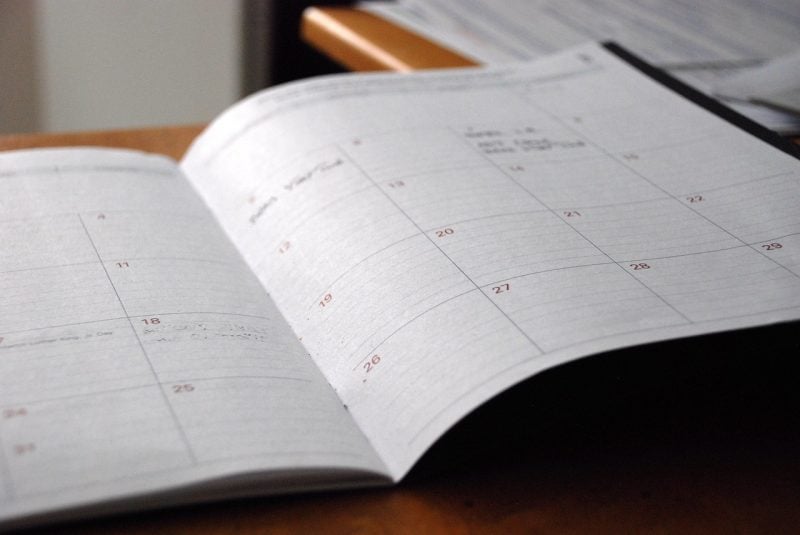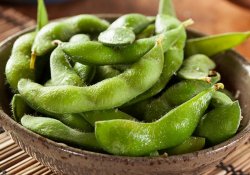Unlike the astral signs that we already know, which follow the horoscope identified by the position of the constellations and planets in the sky, the zodiac Japanese (Juunishi) is based on the Chinese horoscope and was implemented around 1300 years ago.
There is a story behind the choice of animals that represent the zodiac, but because it is an oral tradition, there are different versions both in China and in other countries that use the same nomenclature, such as Koreas, Thailand and Vietnam.
One version of the Chinese legend has it that Buddha called all the animals on Earth to a feast to celebrate the New Year in his temple, but only twelve of them attended.
In gratitude, he gave each of these animals a year's gift, leaving them as the representatives of the zodiac. From this, each person would inherit the qualities of the animal ruling the year they were born.
The Japanese version of this legend changes the deity, as the gods worshipped by the Japanese are Shintoists. Other than that, the other events follow the same path, with these animals being called to the temple.
Among these countries there is also a difference in when the New Year is celebrated, since China uses a different calendar because it is based on agricultural production and the cyclical movement of the stars, that is, they use the lunar calendar.
Because it is based on lunar cycles and takes place on the first new moon after the winter solstice, Chinese New Year does not have a fixed date, and can be celebrated between the third week of January and the second week of February.
Japan, on the other hand, follows the solar calendar, just like we do in Brazil, so the New Year, there called Oshogatsu, is always celebrated on January 1st, after the Earth makes a complete revolution around the Sun.
But those who think that the festivities only happen after the turn of the year are mistaken. Still in December, the Japanese do a "cleaning" in their homes to get rid of the "dirt" from the past year.
This process is called Osouji and is taken very seriously by all people to this day, not limited to cleaning their own homes, but also workplaces, schools and temples, for example.

Índice de Conteúdo
Discover some traditional customs
Many other traditional customs are performed at this time of year, each with a specific meaning, some of which are:
- Nengajo;
- Emma;
- Otoshidama;
- Kadomatsu the shimenawa;
- Shimekazari.
Get to know each of these customs and their most important details below:
Nengajo
The Nengajo, which is practically a social obligation within Japanese society, is a kind of card that people send to family members or clients of a company wishing them a happy start to the year.
Emma
Usually made of wood, the Emma they are little boards where you can write thanks for the past year, as well as wishes for the year ahead. These boards are hung on wooden supports that are in front of the temples.
Otoshidama
In turn, the Otoshidama it is an envelope containing money that is delivered by parents, grandparents and uncles to children and teenagers after the turn of the year. The purpose of this act is to teach the youngest to save money, as well as to wish a good start to the year.
Kadomatsu and Shimenawa
The decorations are not left out of these celebrations, being the Kadomatsu and the Shimenawa the most common. The first is an arrangement made with pine trees, plum branches and bamboo, which are usually left in front of houses and businesses.
already the Shimenawa It is a sacred rope made of braided rice straw used to demarcate sacred space, ward off evil spirits, and attract the gods.
Shimekazari
Similar to a wreath, the Shimekazari It is a traditional decoration made of rice straw rope and placed on doors with wishes of prosperity. They can be decorated in a variety of ways, and some people often put a mention of the animal of the year that will enter.
Another difference between the zodiac of the two countries is that, in Japan, in addition to the animal that rules the year, there is also the one of the month, so the twelve animals rule the twelve Months of the year. And the ruling gods were also changed to Shinto.

What are the animals of each sign?
Zodiac animals vary slightly by country. In the original Chinese, the animals are: Rat, Buffalo, Tiger, Rabbit, Dragon, Snake, Horse, Sheep, Monkey, Dog, Rooster and Pig.
In Japanese there is little change, being the Ox, the Goat and the Boar in place of the Buffalo, Carneiro and Porco. But it's just the name, as the characteristics of each sign remain the same.
Characteristics of each sign
As in the horoscope used by us here in the West, each animal of the Japanese zodiac has its own characteristic that will be transmitted to the person born in the ruling year of a particular sign.
Mouse – 子/鼠 (nezumi)
Years: 1900, 1912, 1924, 1936, 1948, 1960, 1972, 1984, 1996, 2008 and 2020.
Those born in the year of the Rat are intelligent and curious, tend to have a great tendency to collect objects, are generous and loyal.
Ox – 丑/牛 (ushi)
Years: 1901, 1913, 1925, 1937, 1949, 1961, 1973, 1985, 1997, 2009 and 2021.
Born leaders, those born in the year of the Ox are always fair, kind, methodical, honest and good listeners.
Tiger – 寅/虎 (tora)
Years: 1902, 1914, 1926, 1938, 1950, 1962, 1974, 1986, 1998, 2010 and 2022.
Like those born in the year of the Ox, people born in the year of the Tiger are great leaders, as well as talented by nature, endowed with a noble, dreamy, courageous and a little impulsive personality.
Rabbit – 卯/兎 (usagi)
Years: 1903, 1915, 1927, 1939, 1951, 1963, 1975, 1987, 1999, 2011 and 2023.
People born in the year ruled by the Rabbit tend to be great at conflict resolution and self-criticism, as well as loving and excellent company.
Dragon – 辰/龍 (tatsu)
Years: 1904, 1916, 1928, 1940, 1952, 1964, 1976, 1988, 2000, 2012 and 2024.
Those born in the year of the Dragon are gifted with great intelligence, they are resistant, faithful, romantic and flexible, but they can also be a little rude and self-centered.
Serpent – 巳/蛇 (mi)
Years: 1905, 1917, 1929, 1941, 1953, 1965, 1977, 1989, 2001, 2013 and 2025.
Those born in the year ruled by the Serpent tend to have a more analytical approach, be passionate, jealous, and more methodical precisely because of this last characteristic.
Horse – 午/馬 (one)
Years: 1906, 1918, 1930, 1942, 1954, 1966, 1978, 1990, 2002, 2014 and 2026.
Life-loving by nature, those born in the year of the Horse can also have a strong sense of independence and protection, be good-natured and quite loyal.
Goat – 未/羊 (hitsuji)
Years: 1907, 1919, 1931, 1943, 1955, 1967, 1979, 1991, 2003, 2015 and 2027.
Always very connected to all fields of art and very detail-oriented, those born in the year of the Goat are very familiar people, with strong opinions and who abhor routine.
Monkey – 申/猿 (saru)
Years: 1908, 1920, 1932, 1944, 1956, 1968, 1980, 1992, 2004, 2016 and 2028.
People born in the year of the Monkey are always very original, optimistic, confident and competitive.
Rooster – 酉/鶏 (tori)
Years: 1909, 1921, 1933, 1945, 1957, 1969, 1981, 1993, 2005, 2017 and 2029.
They are always very resourceful and perfectionists, but they adapt easily to any situation and are easy to get along with.
Dog – 戌/犬 (inu)
Years: 1910, 1922, 1934, 1946, 1958, 1970, 1982, 1994, 2006, 2018 and 2030.
Those born in the year ruled by the Dog tend to be extremely honest, altruistic, creative, conquering and protective.
Boar – 亥/豚 (inoshishi)
Years: 1911, 1923, 1935, 1947, 1959, 1971, 1983, 1995, 2007, 2019 and 2031.
Those born in the year of the Boar tend to be kind and temperamental people, with strong independence and extremely courageous, if somewhat naive.
Land of ancient traditions and customs, Japan receives around 31.88 million tourists a year, not counting people who go to work and studies and settle for a certain period of time.
If you were also interested in getting to know the aspects mentioned throughout this article, as well as exploring new experiences, pack your bags, there is a whole new world for you to discover!
[/trp_language]





